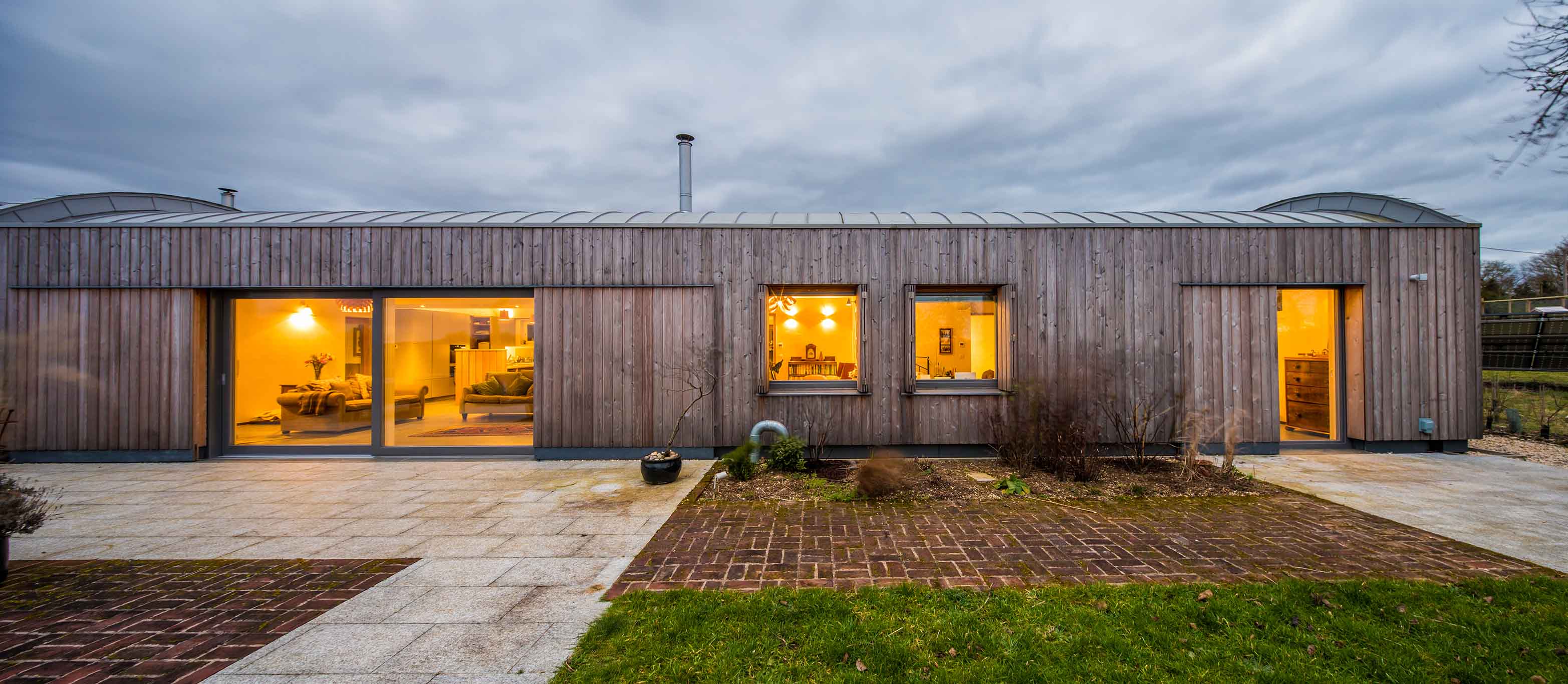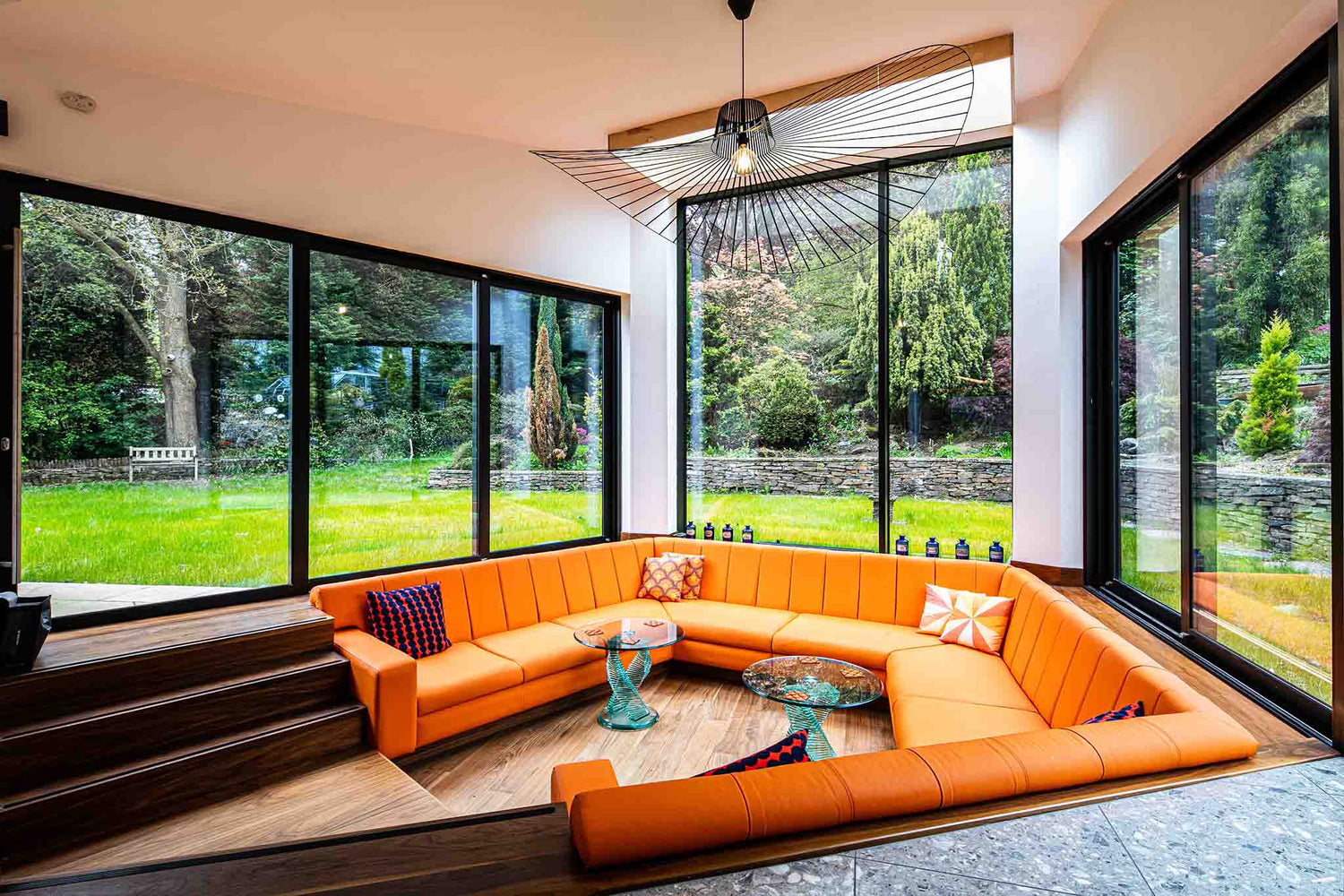
Passive Houses with Norrsken
Where exceptional comfort meets environmental responsibility.
The Passive House (or Passivhaus) standard is a building philosophy that prioritizes exceptional indoor comfort through intelligent design and superior materials.
For forward-thinking homeowners and architects, passive house isn't just about energy savings - it's about creating homes that feel wonderful to live in. Learn about Passive House requirements and benefits here.
Norrsken windows and doors are precision-engineered to exceed passive house requirements while delivering the comfort, beauty, and lasting performance that transform houses into true sanctuaries.
Ready to get started? Call the team now on 01202 632777
-
Passive House Windows
Premium design, precision engineering -
Passive House Doors
High performance insulated entryways
Passive House Resources
Everything you need to bring your passive house vision to life.
Explore our comprehensive collection of passive house expertise - from specialised product specifications and real customer project stories to inspiring galleries of completed builds. Whether you're beginning your passive house journey or finalising specifications, find the guidance and inspiration that supports your path to exceptional comfort.
-
Why Choose Norrsken?
What sets us apart as your supplier? -
Passive House Standard
Technical and performance requirements -
EnerPHit & Passive Retrofits
Passive-oriented methods for existing buildings -
Download PHPP Data
Speed up your calculations
Ready to achieve Passive House excellence?
Take our short survey to discover low-energy windows and doors for your project.
Passive House Projects
From mid-century transformations to passive house schools, discover how Norrsken windows and doors create sanctuaries of sustainable comfort.
An architect’s home and studio, nestled in rural Yorkshire. An eye-catching agricultural-inspired family home. Our passive house projects span every architectural vision. Discover your Norrsken neighbours' passive house visions brought to life.
GALLERY
Unmistakably trusted.
The highest compliment is a recommendation. These are the voices of those who placed their trust in us.
"Excellent Company from start to finish… If only every window supplier operated like this! I have used many others over the years on various projects but Norrsken far exceeded all of them… I hope this helps you make a decision for what is probably a large chunk of your budget… They are totally worth it"
Angela Smith
Self Builder
“Having used Norrsken in the past we were happy to recommend them to one of our clients who was looking for the best sound proofing and weatherproofing they could get being set on a hill top overlooking the sea and facing strong westerly winds. They were not disappointed. A quality product, delivered well and on time. Thankyou.”
Ken Pearson
Homeowner
"Fantastic professional service, from the original design to the final installation. The triple-glazed windows and doors that have been fitted to our new house are of a very high quality and look amazing. We definitely made the right choice when we decided to use Norrsken, nothing is too much trouble for them."
Nigel
Homeowner
"I did my research before contacting Norrsken but they had come highly recommended by our Architect for our Passive House self build.
From the first meeting with Nick we felt confident that they were the Company for us."
Ali and Brian Manning
Passive House Self Builders
“The quality of the triple glazed, alu-clad windows and doors is superb. They feel so reassuringly solid ... I opted for a wood stain for the internal finish on the frames, and am so glad I did, as it shows off the beauty of the wood perfectly. The whole process from order to installation went smoothly. I thoroughly recommend Norrsken.”
Gareth
Homeowner
"Norrsken provided attentive service from drawings to on-site installation for our project at National Trust Stourhead and we would definitely recommend and repeat commission them on future projects."
Charlotte Hill-Baldwin
Architect, H-B Designs
“From our very first interaction to the aftercare support, Norrsken has been exceptional. The quality of their windows is outstanding - beautifully designed, expertly crafted, and a real standout feature in our home. They've truly elevated the overall look and feel of the house.”
Neil Southwell
Self Builder Homeowner
“I can highly recommend Norrsken… After much research I found that Norrsken could beat all of the quotes for a high quality triple glazed option. The windows are beautifully crafted and have received lots of positive comments…. I found the whole team at Norrsken incredibly friendly and helpful…”
Douglas Munro
Selfbuilder

Choose your Passive Window
Configure your perfect passive house windows with precision filters designed for low-energy projects.
Select window opening types, frame materials, glazing configurations, and thermal performance levels that meet your specific requirements. Compare U-values, explore dual-color options, and browse technical data.

Find your Passive Door
Choose from statement entrance doors to expansive sliding systems - all available in dual-color finishes, timber and timber-composite frame models, and custom configurations.
Engineered for the world's leading energy standards, our passive house doors achieve demanding U-values while maintaining the design flexibility and premium build quality that defines Norrsken.
Start your Passive House journey
Windows and doors engineered for next-generation comfort.
Norrsken windows are designed for forward-thinking homeowners and architects who understand that the passive house concept goes beyond energy efficiency - it’s fundamentally about achieving exceptional indoor comfort. Get in touch to start the ball rolling on your Passive House windows today.






